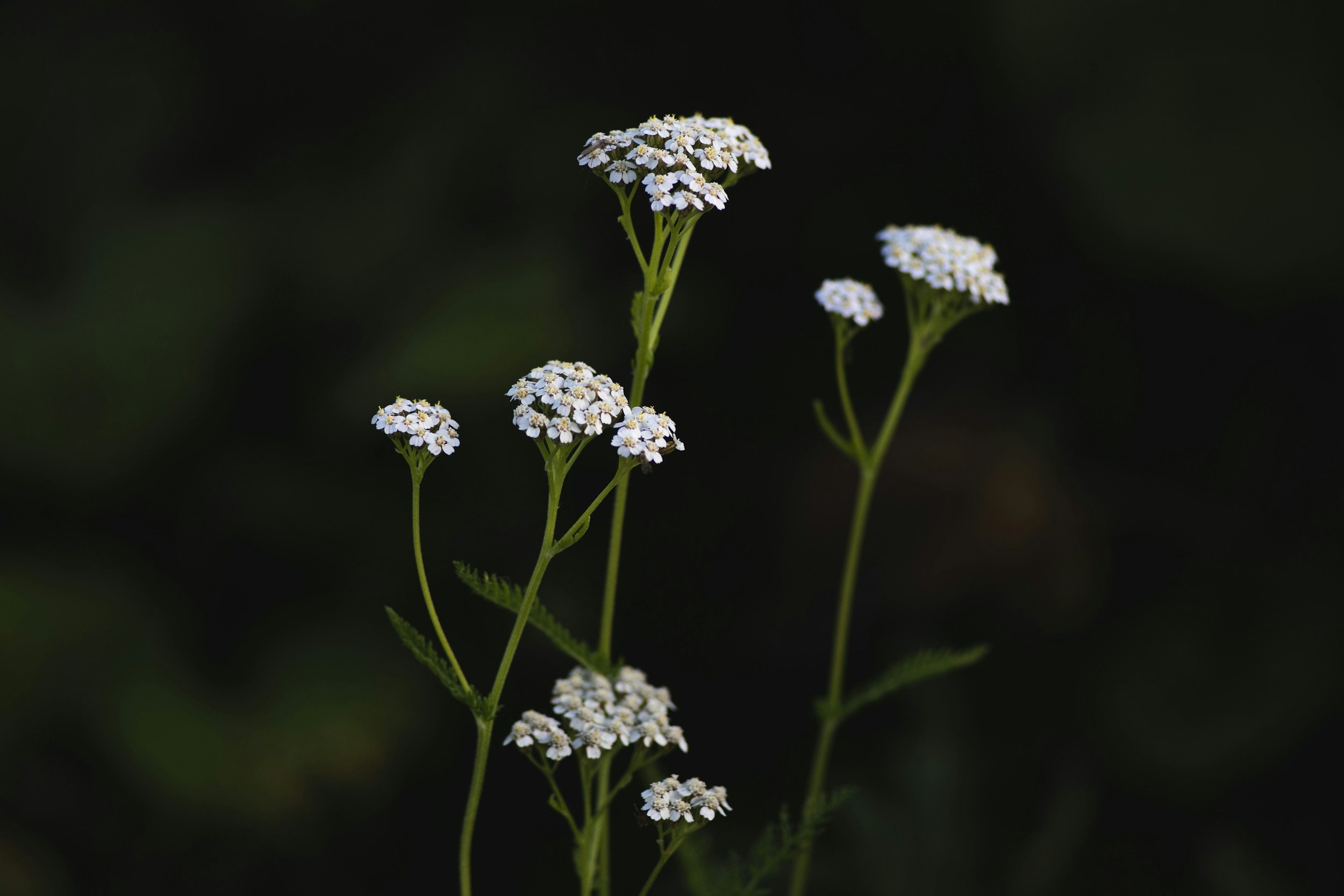
Yarrow
Yarrow
(Achillea millefolium)
Yarrow (Achillea millefolium L., Asteraceae) is an aromatic, feathery-leaved perennial traditionally known as “soldier’s woundwort” for its long history of use on cuts and battlefield injuries. Rich in volatile oils, sesquiterpenes and bitter principles, it is used in herbal medicine as a diaphoretic tea for fevers, and internally or topically in preparations that support circulation, tone blood vessels and promote tissue repair.
Plant Family
Asteraceae
Other significant names
Milefoil
Soldier’s woundwort
Nosebleeds
Parts used
Herba (flowering stage)
Typical forms of prescription
Tinctures
Infused oils & essential oils (topically)
Infusions
Dosage:
Tincture (1:2): 15-40 ml pw; Dried herb: 6–12 g pd.
Yarrow (Achillea millefolium) - Clinical Snapshot.
Primary Actions
Diaphoretic (promotes sweating, especially as a tea)
Hypotensive (lowers blood pressure)
Astringent
Vulnerary (promotes wound healing)
Styptic (stops bleeding)
Diuretic (especially in tea form)
Antiseptic
Anti-catarrhal (clears mucus)
Emmenagogue (stimulates menstrual flow)
Stimulant
Anti-inflammatory
Antispasmodic
Bitter tonic (stimulates digestion)
Vasodilator (widens blood vessels)
Primary Indications
Traditionally used to support:
Fevers and colds (especially early-stage with chills)
High blood pressure (hypertension)
Varicose veins and haemorrhoids
Rheumatism and inflammatory joint conditions
Amenorrhoea and irregular or erratic menstrual cycles
Urinary tract inflammation, including cystitis
Excessive catarrh and sinus congestion
Dry, irritated skin and minor wounds
Scars, cuts, and bleeding, both external and internal (mild)
⚠️Cautions / Safety⚠️
Not recommended during pregnancy due to its emmenagogue and uterine-stimulating effects.
Achillea millefolium
Phytochemistry and Pharmacology
-
Includes: Chamazulene, sabinene, cineole, borneol
Action: Anti-inflammatory, antimicrobial, antispasmodic
Use: The essential oils in yarrow give it powerful topical and internal anti-inflammatory effects. Chamazulene (especially in blue yarrow oil) provides strong wound-healing and anti-irritant properties. The oils also support bronchial relaxation and digestive calming.
-
Includes: Achillin
Action: Bitter tonic, cholagogue, anti-inflammatory
Use: These compounds give yarrow its bitter taste and liver-stimulating effects, helping promote digestion, appetite, and bile flow. They also help regulate menstrual cycles and reduce pelvic congestion.
-
Includes: Apigenin, luteolin, rutin
Action: Antioxidant, anti-inflammatory, antispasmodic
Use: Flavonoids support capillary stability, reduce smooth muscle tension, and promote gentle relaxation, making yarrow effective in uterine cramps, gut spasms, and varicose veins.
-
Action: Astringent, wound healing, haemostatic
Use: Tannins help stop minor bleeding, tone tissues, and tighten mucous membranes. Yarrow is used both internally and externally for wounds, diarrhoea, bleeding gums, and heavy menstrual flow.
-
Includes: Achilleine
Action: Haemostatic
Use: Achilleine is believed to directly support blood clotting and reduce bleeding, reinforcing yarrow’s traditional use in first aid, nosebleeds, and menorrhagia.
Traditional Use
Yarrow has been revered as a powerful wound herb since ancient times, famously associated with the Greek hero Achilles, who was said to have used it to treat his soldiers' battlefield injuries. This reputation gave rise to its botanical name, Achillea. Traditionally, fresh yarrow leaves were applied directly to wounds to help staunch bleeding, and the plant was widely used across Europe for internal and external healing.
Clinical Discussion
Fresh yarrow leaves act as styptics, helping to stop bleeding in deep cuts and wounds. The whole herb contains essential oils with potent antimicrobial properties, including chamazulene, a powerful anti-inflammatory compound that gives yarrow essential oil its deep blue colour when steam-distilled. Interestingly, 18th-century herbalist Bergius observed that this blue oil developed only when the plant was grown in clay-rich soils, whereas yarrow from sandy soils produced a weaker green or yellow oil.
As a bitter, aromatic herb, yarrow also supports the digestive system, especially the liver, by stimulating bile flow and aiding fat absorption. It increases circulation to the abdominal and pelvic areas, making it useful for menstrual conditions linked to stagnation, such as amenorrhoea. Its diaphoretic action encourages sweating, supporting fever management during colds and flu. A classic remedy combines yarrow with mint (Mentha spp.) and elderflower (Sambucus nigra) as an infusion for early-stage viral infections. Externally, its astringent and vulnerary properties make it effective in sprays or lotions for varicose veins, haemorrhoids, and slow-healing wounds.
Cultivation & Harvesting
Yarrow is easy to grow and makes a beautiful, low-maintenance addition to any herbal garden or wild patch. Once established, it thrives in full sun and well-drained soil and tolerates drought and poor conditions. Sow seeds in spring or divide established clumps in autumn to propagate.
Harvest the aerial parts, leaves and flowering tops for medicinal use, just as the flowers begin to open, ideally on a dry, sunny morning when the volatile oils are at their peak. Dry in bunches, hung upside-down in a warm, shaded, well-ventilated area.
Although the roots are less commonly used, you can grow and harvest them in the second or third year, digging them up in autumn after the plant has died back.
Key Botanical Features of Yarrow (Achillea millefolium)
Growth
Achillea millefolium is a hardy, herbaceous perennial native to temperate regions of the Northern Hemisphere.
It typically grows to 30–60 cm (12–24 inches) in height, but can reach up to 90 cm (35 inches) in rich soils.
Forms a basal rosette of leaves with upright, unbranched or slightly branched flowering stems.
Spreads by creeping rhizomes and readily naturalises in grasslands, meadows, and roadsides.
Roots
Fibrous root system with short rhizomes that help the plant spread and form dense colonies.
Well-adapted to poor, dry soils and capable of surviving drought once established.
Leaves
Arrangement: Alternate along the stem.
Shape: Deeply dissected and feathery, giving a soft, fern-like appearance.
Size: Basal leaves can be up to 15 cm long; stem leaves gradually reduce in size.
Colour: Grey-green to bright green, depending on soil and light conditions.
Surface: Soft, slightly hairy, and aromatic when crushed.
Flowers
Type: Composite (typical of the Asteraceae family), with both ray and disc florets.
Inflorescence: Dense, flat-topped clusters (corymbs) at the top of the stem.
Colour: Usually white, sometimes pink or pale lilac in wild types; ornamental cultivars may be brightly coloured but are not medicinal.
Size: Individual flower heads are about 4–6 mm across.
Flowering time: Typically from June to September.
Fruit & Seeds
Type: Small, dry achene without a pappus (no wind-dispersing hairs).
Dispersal: Primarily by gravity; some self-seeding occurs near the parent plant.
Seeds germinate readily in disturbed soil.
Adaptations
Tolerant of poor, dry, or rocky soils and full sun; also survives well in grassland competition.
Frequently found in meadows, verges, and pasturelands.
Attracts pollinators such as bees, hoverflies, and butterflies with its abundant nectar.
Produces volatile oils and bitter compounds that deter herbivores and support medicinal use.
Sustainability/Conservation
Not at risk and widely naturalised across the UK and Europe.
Grows easily from seed or root division, making cultivation a sustainable option.
Wild harvesting should prioritise ethical foraging practices, leave roots intact and take only what is needed from well-established populations.
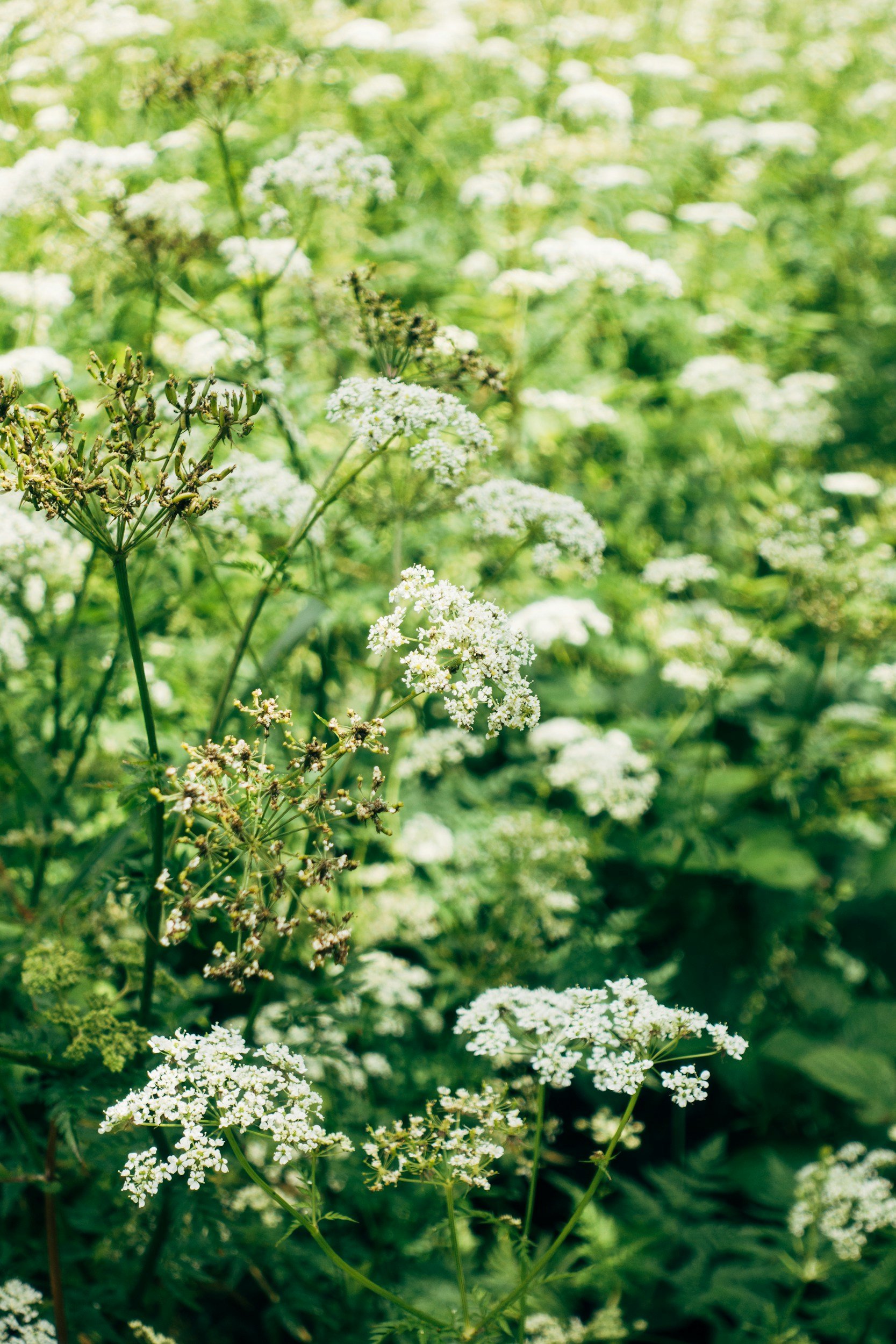
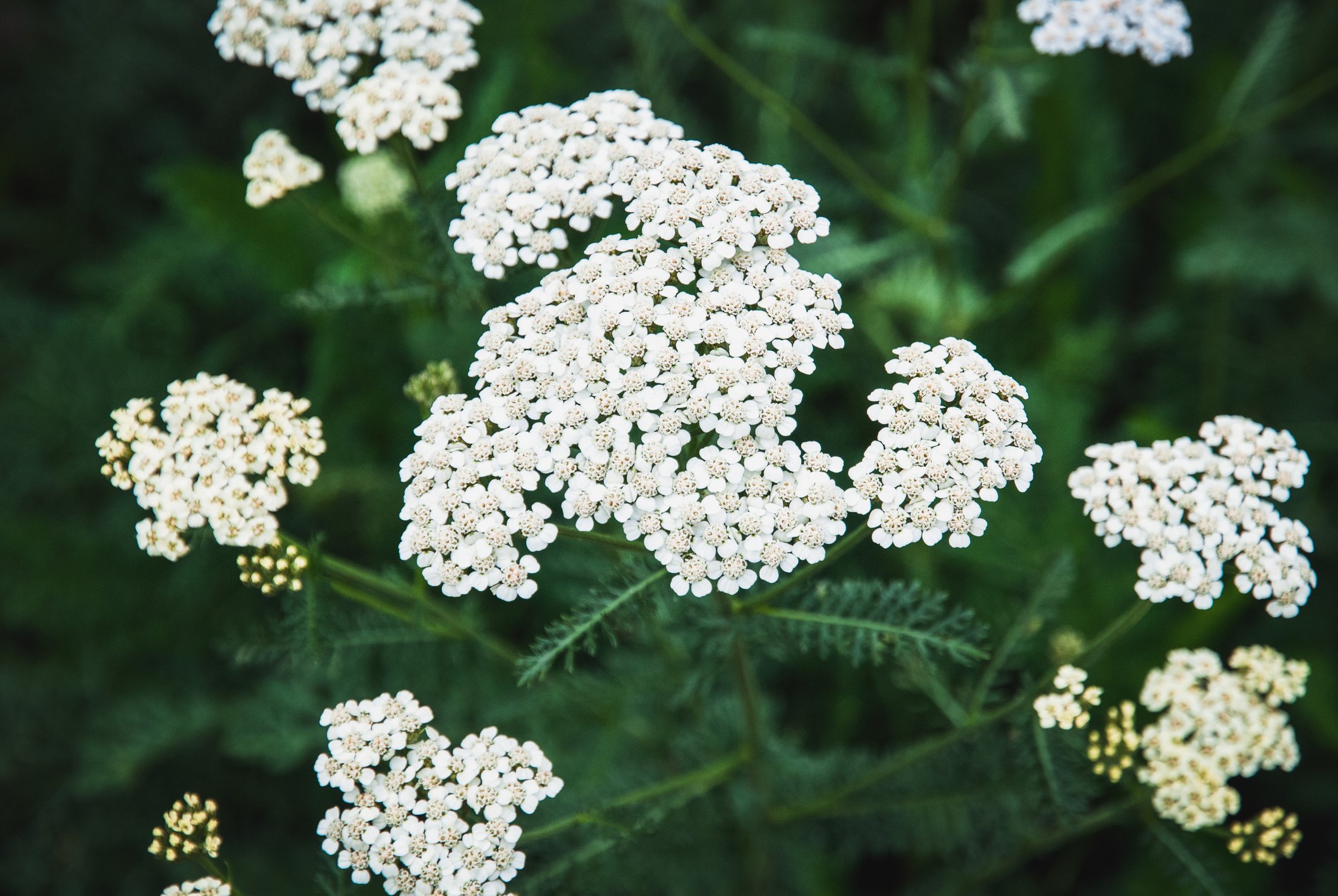
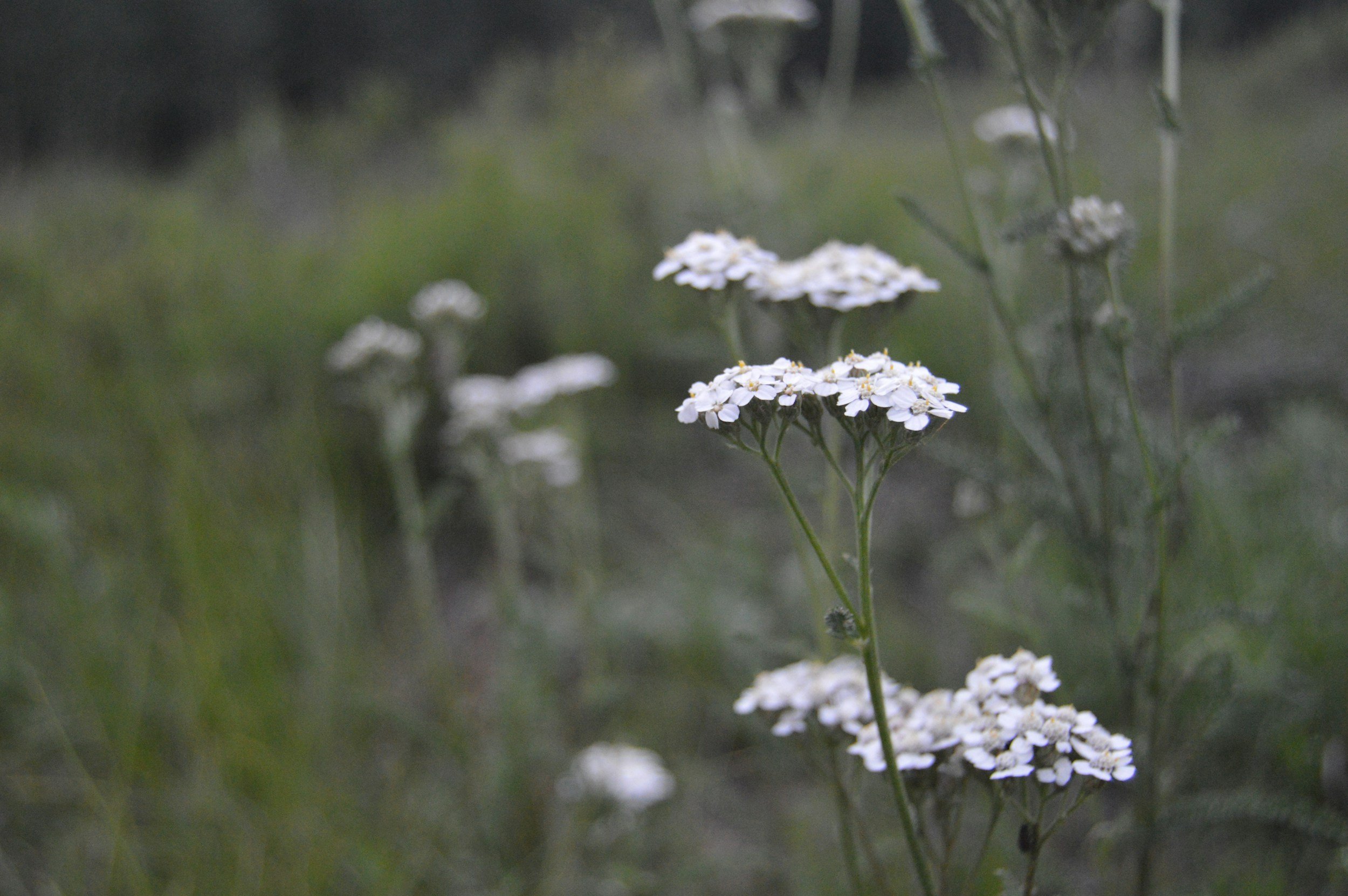

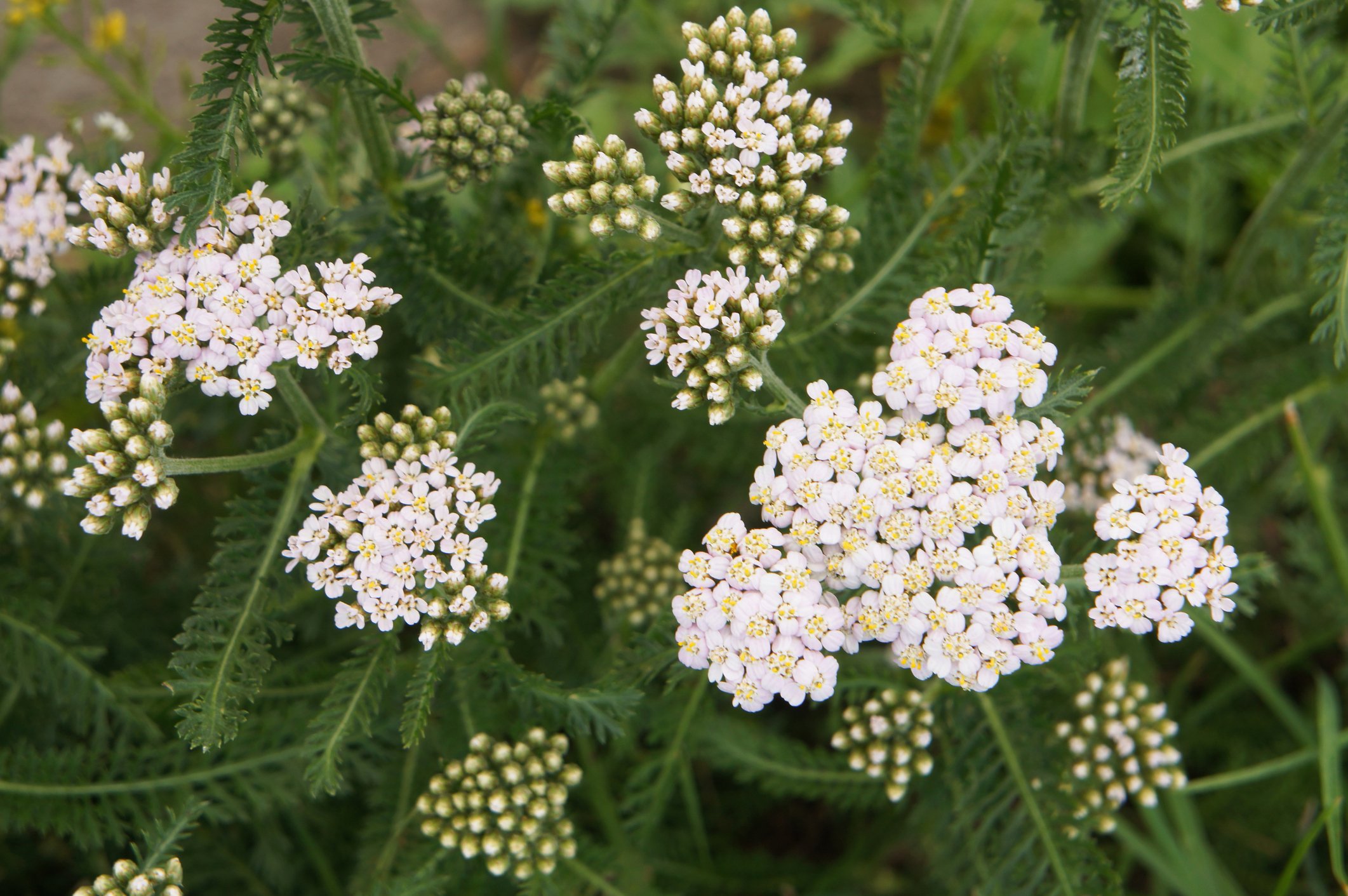
Sources
Bartram, T. (1998). Bartram’s encyclopedia of herbal medicine. Constable.
Fisher, C. (2018). Materia medica of western herbs (Rev. ed.). Aeon Books.
Hedley, C., & Shaw, N. (2020). A herbal book of making and taking. Aeon Books.
Hoffmann, D. (2003). Medical herbalism: The science and practice of herbal medicine. Healing Arts Press.
McIntyre, A. (2019). The complete herbal tutor (Revised & expanded ed.). Aeon Books.
Royal Botanic Gardens, Kew. (n.d.). Plants of the World Online. https://powo.science.kew.org/
Mills, S., & Bone, K. (2013). Principles and practice of phytotherapy: Modern herbal medicine (2nd ed.). Churchill Livingstone; Elsevier.
Barnes, J., Anderson, L. A., & Phillipson, J. D. (2013). Herbal medicines (3rd ed.). Pharmaceutical Press.
Benzie, I. F. F., & Wachtel-Galor, S. (Eds.). (2011). Herbal medicine: Biomolecular and clinical aspects (2nd ed.). CRC Press; Taylor & Francis.
Evans, W. C. (2009). Trease and Evans’ pharmacognosy (16th ed.). Elsevier.
Disclaimer: This page is for educational purposes only. Consult a qualified medical herbalist before using herbs, especially during pregnancy, when trying to conceive, while breastfeeding, for medical conditions, or with children.
Read the full disclaimer → Medical Disclaimer.




